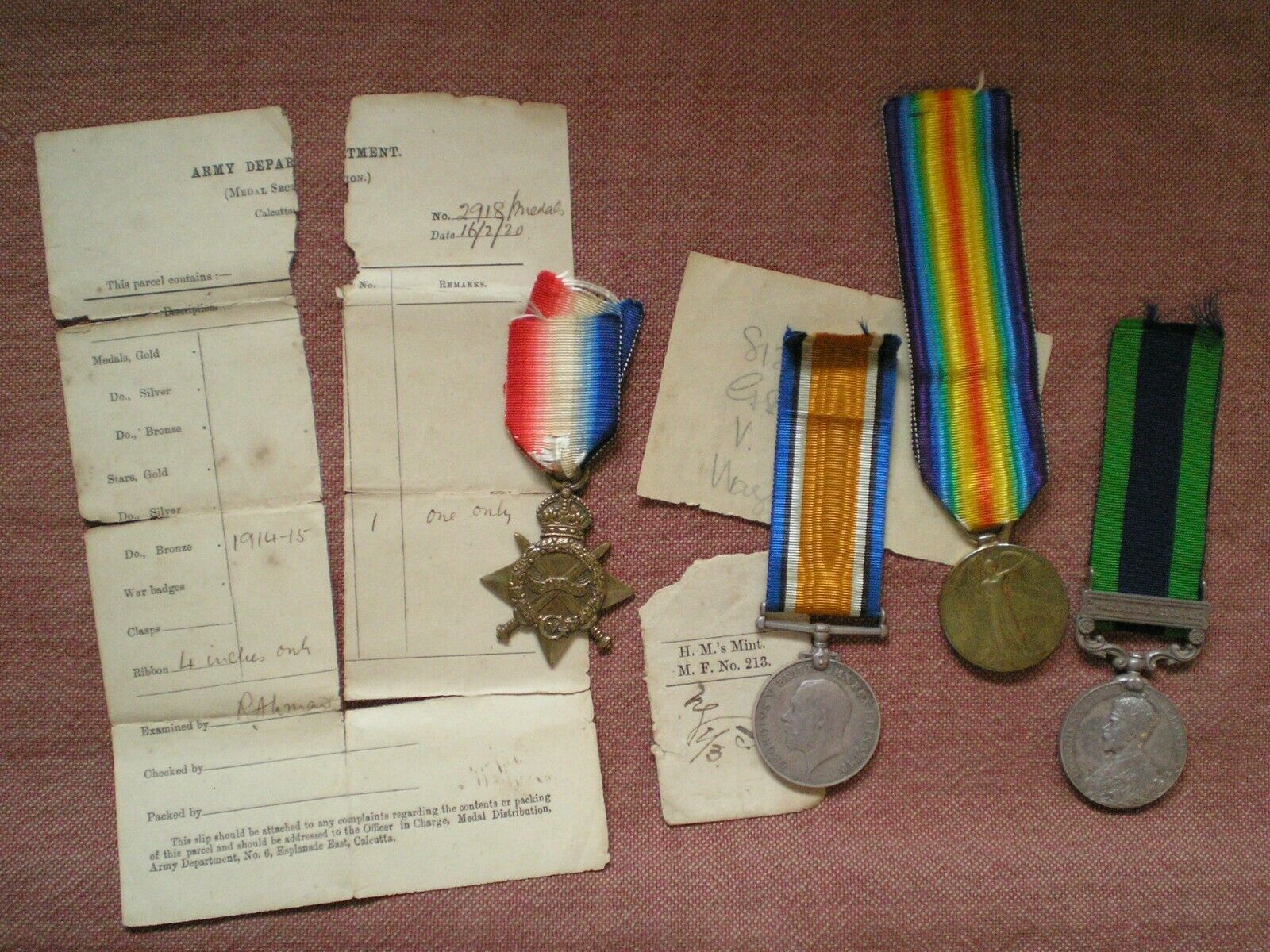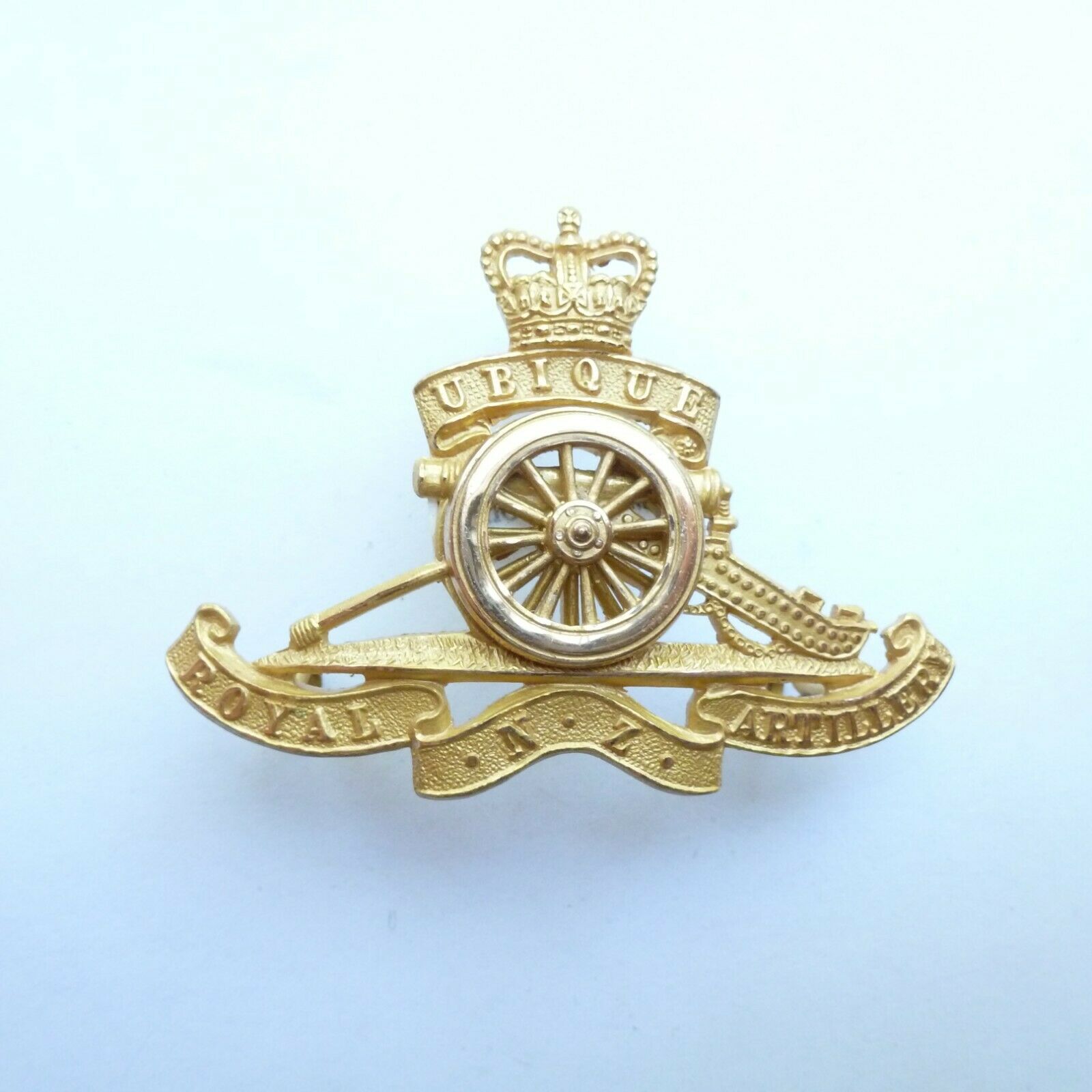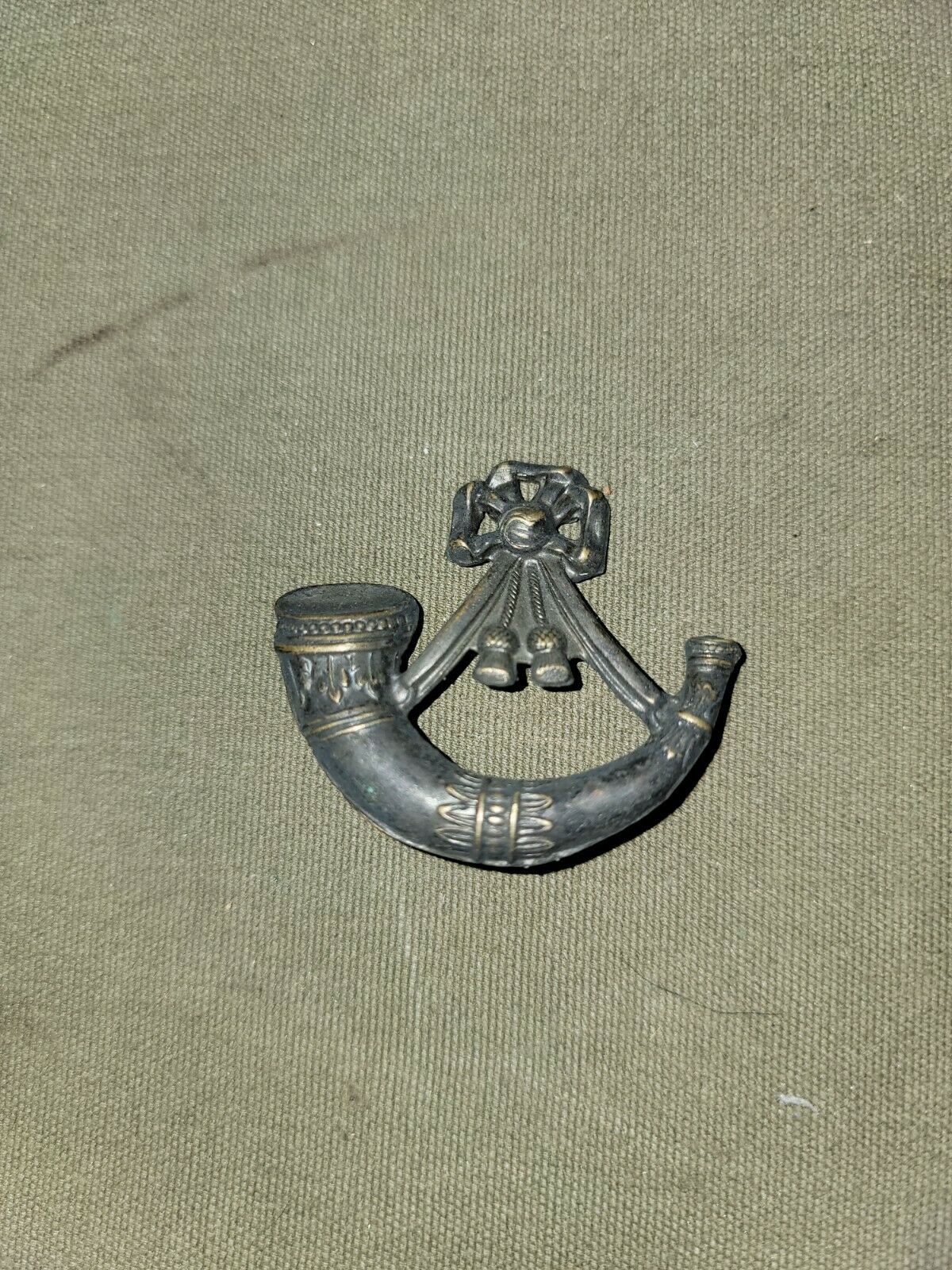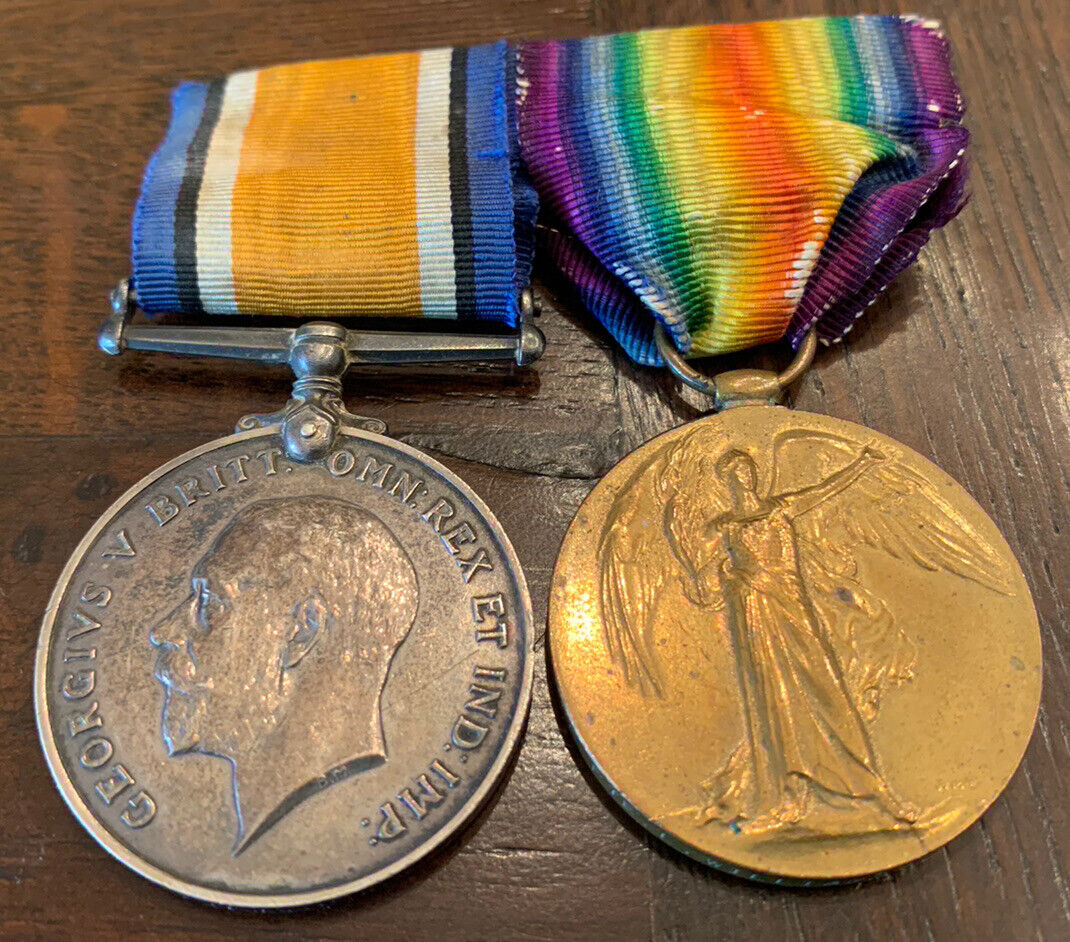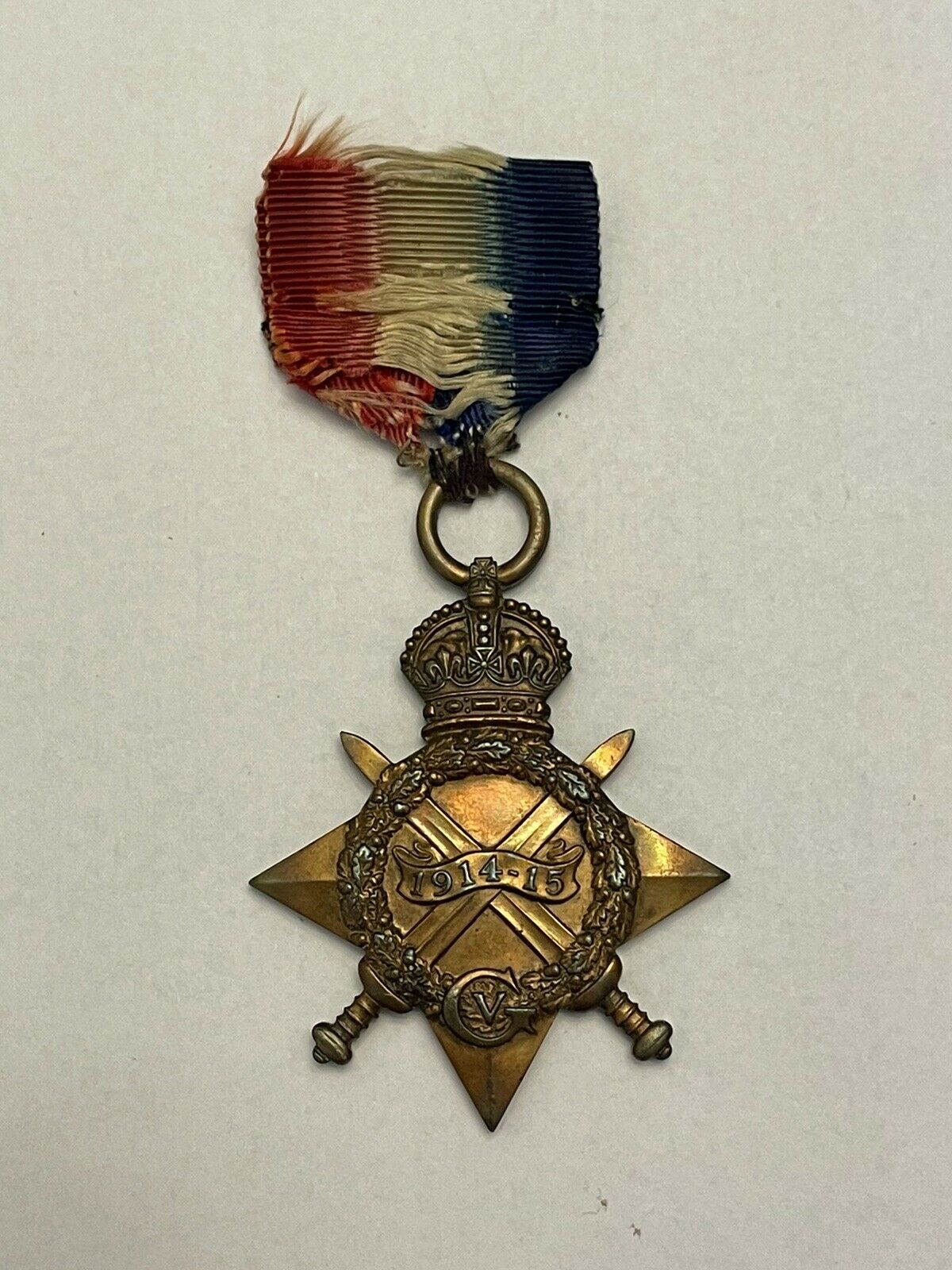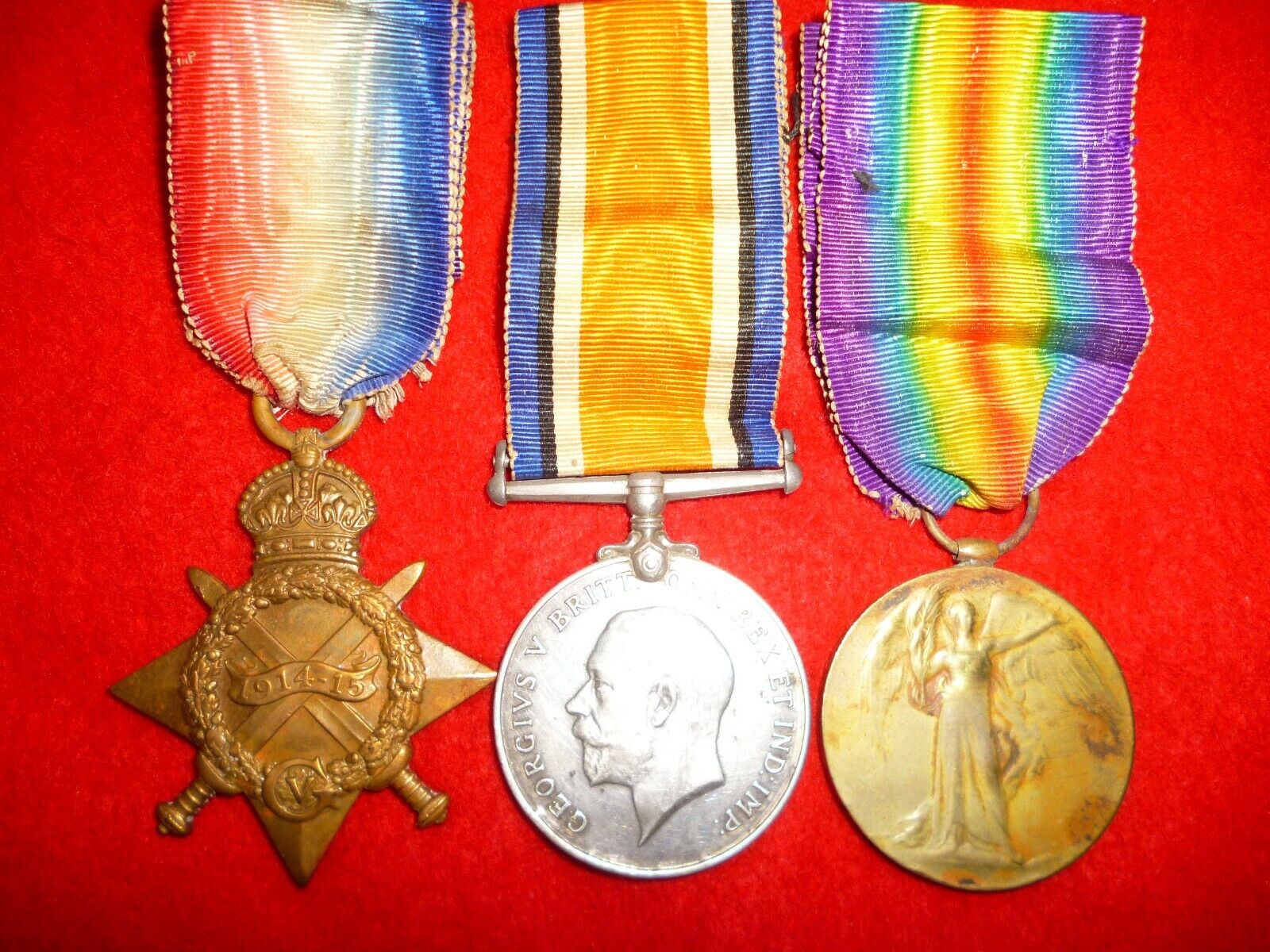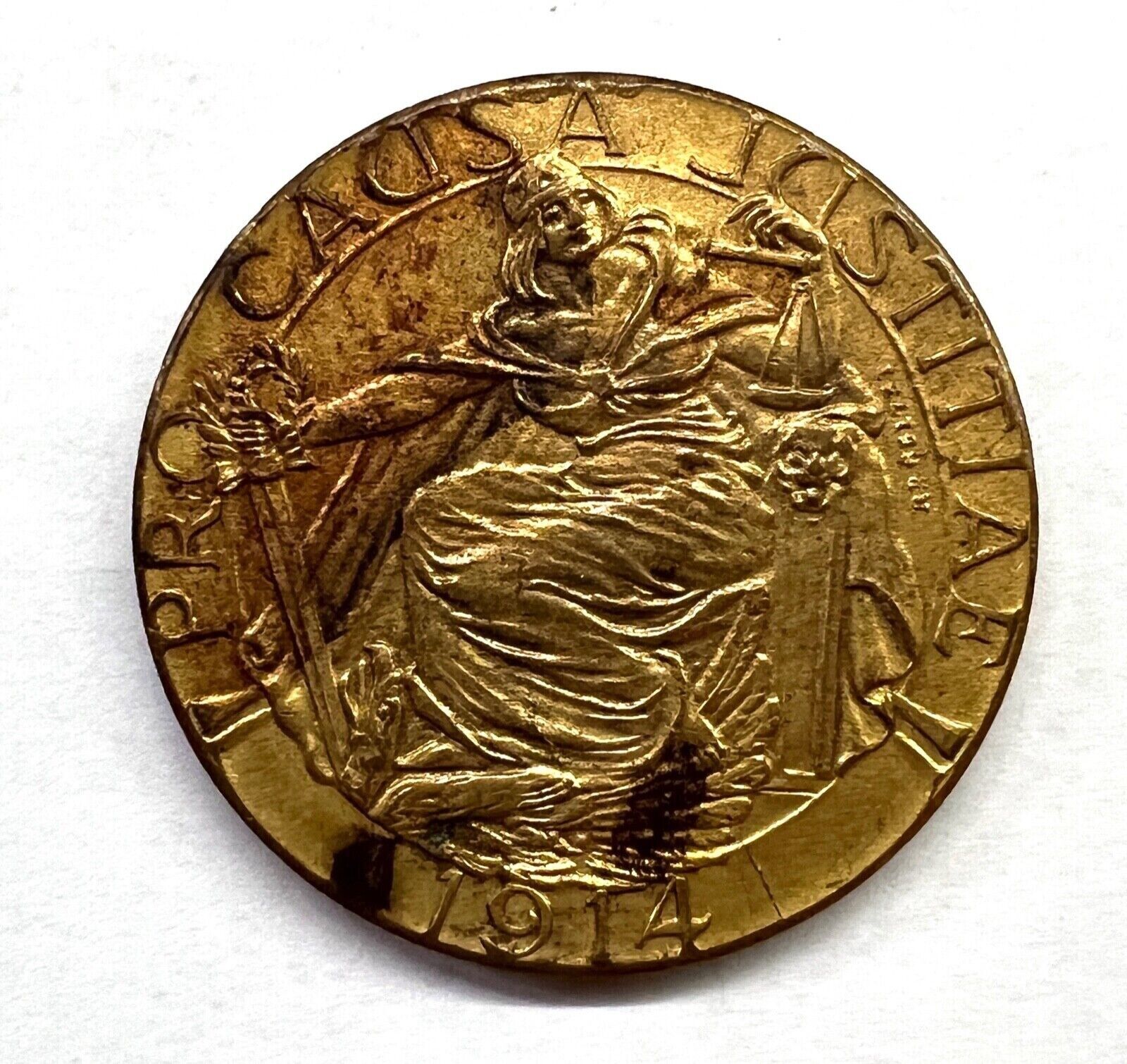-40%
Sudan, Boer War, WWI British LongService Medal Group Pinfield E LANC Regiment
$ 1055.47
- Description
- Size Guide
Description
Sudan, Boer War, WWI British LongService Medal Group Pinfield East Lancashire RegimentMedal group correctly impressed to 4441 PTE. J. E. PINFIELD. RIFLE. BDE. and 10679 J. E. PINFIELD. E. LAN. R. Respectively
John Elijah Pinfield
Pinfield was born in 1873 to in Fairfield, Bromsgrove, Worcestershire, England to Father John Pinfield. Very little is available and verifiable regarding Pinfield’s early life.
Pinfield enlisted with the 2nd Battalion Rifle Brigade on February 14, 1896, with number 4441. On September 23, 1897, the 2nd/Rifle Brigade left Aldershot for Royal Albert Docks Woolwich, where it embarked on the Avoca. It disembarked in Malta on October 3, 1897. The 2nd/Rifle Brigade was quartered at Isola Gate Barracks, San Francesco de Paola Barracks, St John's Cavalier Vittoriosa and Polverista Barracks, all on the Cottonera side of the Grand Harbor.
On July 12, 1898, the 2nd/Rifle Brigade was quartered at Verdala Barracks for 6 months. On July 12, 1898, it left Verdala Barracks and embarked for Egypt on board the Nubia. The battalion disembarked in Alexandria on July 16, 1898. Pinfield participated in the Battle of Omdurman on September 2, 1898. This was an expedition led by General Kitchener to avenge the death of General Gordon and conquer the Sudan. Kitchener defeated the Mahdi’s Army with 10,000 ‘Dervishes’ were killed, 13,000 wounded and 5,000 taken prisoner. On September 22, 1898, the 2nd/Rifle Brigade, 737 strong, left Alexandria for Crete.
The 2nd Battalion sailed from Crete on the Jelunga on 2nd October 1899 and reached Durban on October 26, 1899. At 3am on the 30th the Battalion got into Ladysmith by rail, and after a hasty meal set out to join the 1st Devon, 1st Manchester, and 2nd Gordons under Ian Hamilton at Limit Hill, north of the town, where Sir George's center was that day. The Brigade did not have much to do beyond sending help to Colonel Grimwood's brigade on the right or east. During the forenoon the battalion and the 2nd Gordons deployed and lined the crest of Limit Hill, from which they covered the retreat of Grimwood's brigade, they themselves eventually retiring about 3pm.
From the commencement of the siege the Battalion held King's Post and Leicester Post on the north of the town. The rocky nature of the ground, the want of suitable tools, and the fact that many of the diggers had to be on duty in the trenches all night, made the task superlatively difficult Observation Post, about a mile in advance of King's Post, was till 9th November held by a weak detachment of the 5th Lancers, who were attacked on that day, and the Rifle Brigade had to reinforce them. The attack was repulsed. The battalion's losses were 1 officer and 1 man mortally wounded and 4 men wounded. They had now to garrison this post and to set about making it impregnable. One very remarkable piece of work done by the battalion was the keeping down by the Lee-Metford fire of 'sharpshooters, many of whom were officers', of the Boer artillery-fire at ranges between 2000 and 2800 yards. On the morning of 8th December, it became known that General Hunter with 600 men of the Imperial Light Horse and Natal Carabiniers had blown up two big guns on Lombard's Kop and captured a maxim. This fired Colonel Metcalfe to do something similar, and he got Sir George's sanction to endeavor to destroy the howitzer on Surprise Hill. On the night of the 9th, he reconnoitered the route, and on the 10th at 10 pm started with five companies’ 2nd Rifle Brigade and a few Engineers under the ever-ready Lieutenant Digby-Jones. The hilltop was reached; after some delay the howitzer was found, not in its emplacement; the explosive was inserted; a fuse was lit, but no explosion happened; another had to be set. This time the gun was destroyed; but meanwhile the Boers had gathered in force on the hillside, and our men had to charge with fixed bayonets, never firing a shot. Many Boers were bayoneted. Colonel Metcalfe lost 1 officer and 11 men killed, 36 wounded, and 10 prisoners or missing, but a bit of good work had been boldly and skillfully executed. Sir George White in his dispatch of 23rd March 1900 remarks that "the companies were, on the way back, admirably handled by their captains ... The affair reflects great credit on Lieutenant Colonel C T E Metcalfe and his battalion".
At 3am of 6th January the battalion heard the furious rattle of musketry round the southern defenses, and about 5:30am they were ordered to send 6 companies to Caesar's Camp, 4 miles off, arriving there about 7am. 5 companies were pushed into the firing line, which was distant from the enemy only 80 yards. "For nearly the whole day the fight raged fiercely, first one side then the other gaining a slight advantage, but we could not succeed in dislodging the Boers" from the south-east of the hill. At 3:30 the enemy tried to rush forward, but were driven back, and shortly afterwards retreated under a heavy fire, "some companies firing their last round". The battalion this day lost 1 officer killed and 1 mortally wounded, and 20 men killed, 5 officers and 32 men wounded. That night officers and men lay on the stricken field soaked and physically wretched but knowing that another big bit of work had been done. 5 officers and 8 non-commissioned officers and men were mentioned in Sir George White's dispatch of March 23, 1900.
On 7th January the battalion was ordered to take over Waggon Hill from the 1st King's Royal Rifles. The Honorable A. Dawnay, adjutant of the 2nd battalion, in the account which he gives of the siege, already quoted from, says: "On arriving at Waggon Hill we were not best pleased at our change of quarters; we found none of those snug burrows or palatial residences that we had built with so much care in our old habitation, and the defensive works were few and far between. All the weary digging had to be started afresh, only under more trying conditions, as it all had to be done by night, it being quite impossible to attempt anything of the sort by day, since we were continually exposed to shrapnel at the convenient range of 3200 yards. Quite two miles of front had to be fortified, but in a very short time a complete set of works made their appearance, continuous sangars occupied a large portion of our front, wire entanglements were laid down all round the front of our position, and abattis made in places".
Perhaps the King's Royal Rifles thought that they did all the digging desirable, but various writers support the statements contained in the quotation. General Ian Hamilton has almost a faultless record in the campaign. He added to his reputation on the 6th of January, but it does seem almost a fault that he allowed the battalions occupying Waggon Hill and Caesar's Camp to sit there without working at their defenses as their brethren on the north side of Ladysmith were doing.
After the relief of Ladysmith, the garrison was given a period to rest and recuperate, and never did men deserve that more. They were ready to go forward when General Buller moved north, and the 2nd Rifle Brigade were brigaded under General Walter Kitchener with the 1st Devon, 1st Manchester, and 2nd Gordons. In the fighting at Rooi Kopjes, 24th July, and Amersfoort, 7th August, the battalion took no prominent part, but they were to get a great opportunity in good time. When the force arrived at Geluk, 23rd August, it was evident the Boers were about to make a stand. On the 26th, at a conference between Lord Roberts and General Buller, it was arranged that the troops of the latter, being the old Ladysmith garrison, should attack the enemy's position on the 27th.
The position was an extremely strong one, stretching for miles on either side of the Belfast-Koomati Poort Railway. Bergendal, by which name the battle has become known, is the name of a farm, the house, and buildings of which are situated on, or rather a little to the east of, a kopje. This kopje and the buildings, which were seen to be strongly held, lie to the south of the railway and to the west of a long ridge or series of kopjes running roughly north and south. These ridges seem to have been the Boer main position. They had guns on these as well as on the hills north of the railway. Sir Redvers decided that Bergendal kopje must be the first point attacked. It was slightly isolated and formed a definite objective. He placed the Manchester Regiment, four naval 12-pounders, two 4'7 guns, two 5-inch guns, the 61st Howitzer Battery, and the 21st Battery on a ridge lying south of, and roughly parallel to, a line drawn from Bergendal to the Boer main positions. The 42nd Battery was farther to the right of the Manchesters. A Battery RHA and the 53rd RFA fired from a point about one and a half mile north of the other artillery and close to the railway. For three hours these guns kept up a furious fire on the buildings and kopje, but the Boers would not shift. The infantry was then ordered to assault, the 2nd Rifle Brigade to attack from near where the A Battery was—that is, from the west—the 1st Royal Inniskilling Fusiliers from near the main artillery position, or the south. Between these battalions were the 1st Bevon and 2nd Gordons in support. The Rifle Brigade being extended to about ten paces, had reached a point 800 yards west of the kopje when there opened a terrific rifle-fire both from the kopje and from hills north of the railway. The attackers lay down, then after a great effort by our artillery the Rifle Brigade again advanced by rushes, and "there never was a waiver from start to finish". The Boers of course bolted, but a pom-pom complete and 19 prisoners were taken: 14 of their dead were found. The Rifle Brigade lost 3 officers killed or mortally wounded, and 21 riflemen killed or died of wounds; 7 officers and 63 men were wounded. The losses of the other battalions were very slight. Many heroic deeds were done in the assault. Rifleman Durrant for carrying Corporal Weller 200 yards under a very heavy fire got the VC.
General Buller said: "The honours of the assault belong to the Rifle Brigade, as they had to attack that part of the kopje which had been most protected from our artillery-fire; but all the troops did splendidly, and the carrying of such a position, held as it was by resolute men (the famous Johannesburg Zarps), will always remain present to the minds of those who witnessed it as a most gallant feat of arms". After referring to the excellent way the maxims were handled and other dispositions made, Sir Redvers remarks: "The loss of the post at Bergendal led to the enemy abandoning in great haste the whole of their immensely strong position about Dalmanutha and forced them to withdraw in great confusion beyond Machadodorp. In fact, the capture of Bergendal by the Rifle Brigade and Inniskilling Fusiliers cleared the whole of the high veldt of the enemy".
Six officers and 8 non-commissioned officers and men of the 2nd Rifle Brigade were mentioned in General Buller's dispatch of 13th September. Four officers and 3 non-commissioned officers were also mentioned in his final dispatch.
The battalion crossed the railway along with General Buller and moved north towards Lydenburg, which, after some fighting, they reached on 7th September, and in that district, they remained for a considerable time. Henceforth they were to have plenty of work and a fair amount of hardship, but they were to see no fighting to be compared with Bergendal. During the remainder of the campaign, they were employed in the Eastern Transvaal. In March 1901 three companies accompanied Colonel Park on a night raid on Kruger's Post, which was entirely successful. In April the battalion was put into a column under General W Kitchener, and for the next three months did much hard marching, chiefly north of the Delagoa Railway. About the end of July 1901, the battalion took over several posts about Middelburg and garrisoned these for a long period. 990 officers and men of the 2nd battalion left Port Natal on the SS Malta in September 1902 for a new posting in Egypt.
In February of 1912, Pinfield transferred to the 2ndBattalion East Lancashire Regiment, which was serving in Wijnberg, South Africa when the war broke out in August 1914. They returned to England, landing in Southampton on October 30, 1914, and joined the 24th Brigade in 8thDivision at Hursley Park, Winchester. Pinfield arrived in Le Havre, France on November 6, 1914. In 1915 they were in action at the Battle of Neuve Chapelle, the Battle of Aubers and the Action at Bois Grenier. On October 18, 1915, they transferred with the 24th Brigade to 23rd Division to instruct the inexperienced troops. In March 1916, 23rd Division took over the front line between Boyau de l’Ersatz and the Souchez River in the Carency sector from the French 17th Division, an area exposed to heavy shelling. In mid-April they withdrew to Bruay returning to the Carency Sector in mid-May just before the German attack on Vimy Ridge, in the sector on their right. On June 15, 1916, the 24th Brigade returned to 8thDivision. They were in action at the Battle of the Somme.
Pinfield was killed in action on July 31, 1917, at the 3rdBattle of Ypres, the assault on Pikemen Ridge. There is no known grave for Pinfield, and he is remembered on panel 34 of the Menin Gate. At the time of his death, he was serving as a Sergeant Shoemaker. Pinfield had been married to Sarah Green on September 14th, 1908 and had 3 children. His medals were requested by his wife in 1920. Through his career Pinfield served in India, Crete, Malta, Egypt, Sudan, South Africa, France and Flanders.
No further research undertaken.
See pics for condition.
Please ask any questions. I do combine shipping, but that may or may not be of much help depending on weight and destination. Shipping for this item will be USPS first class ground with insurance.











